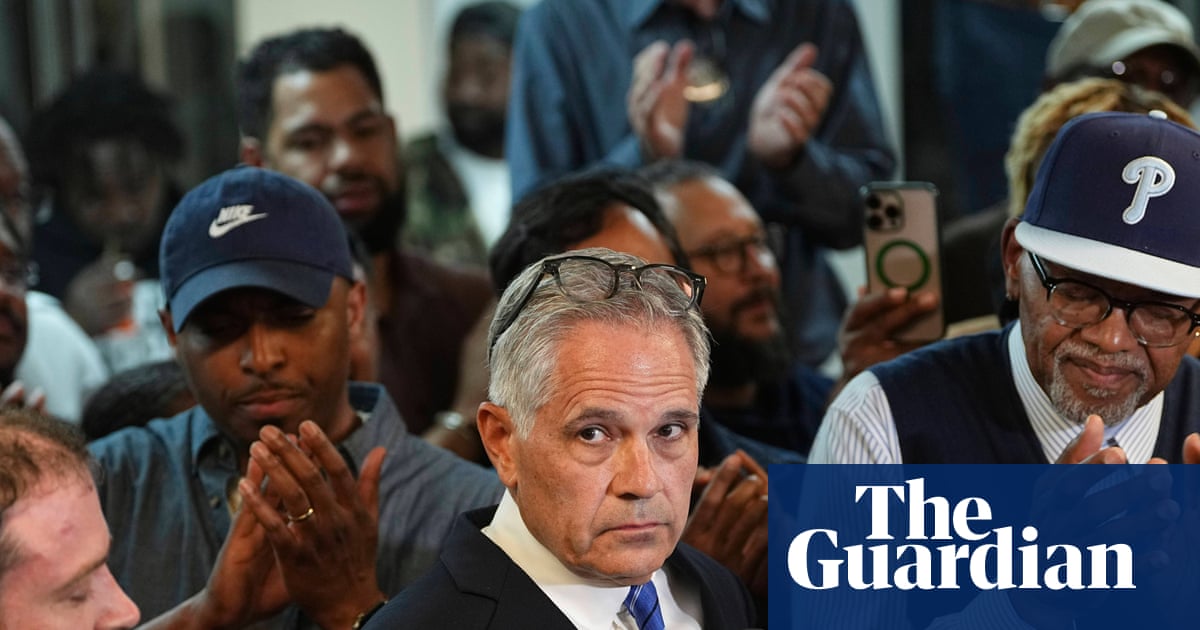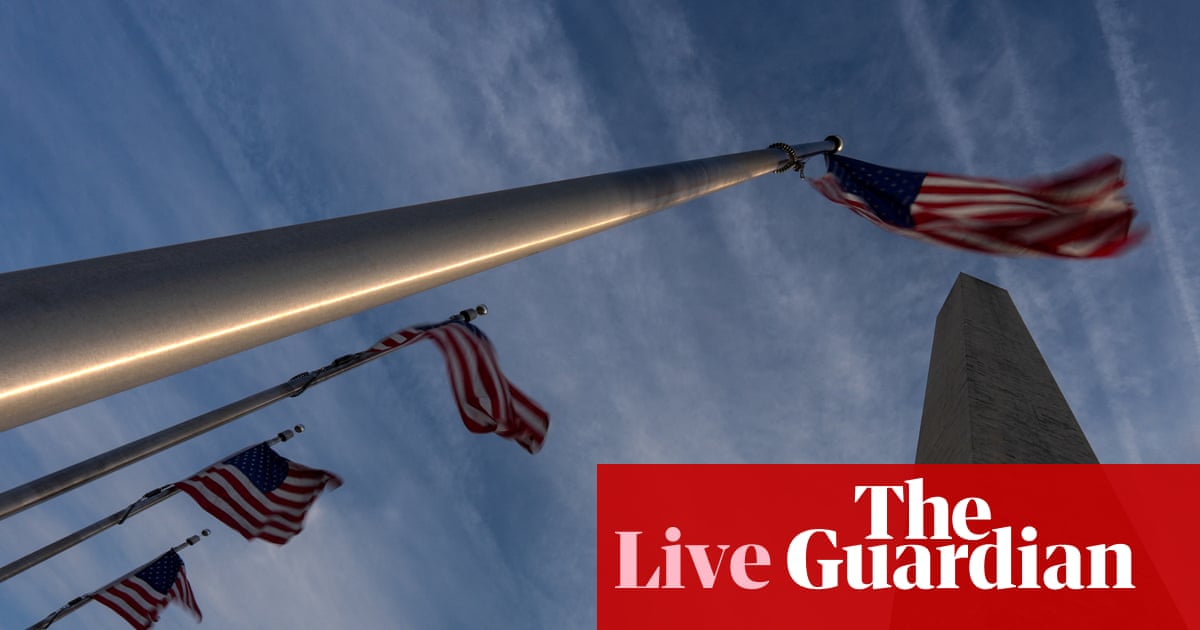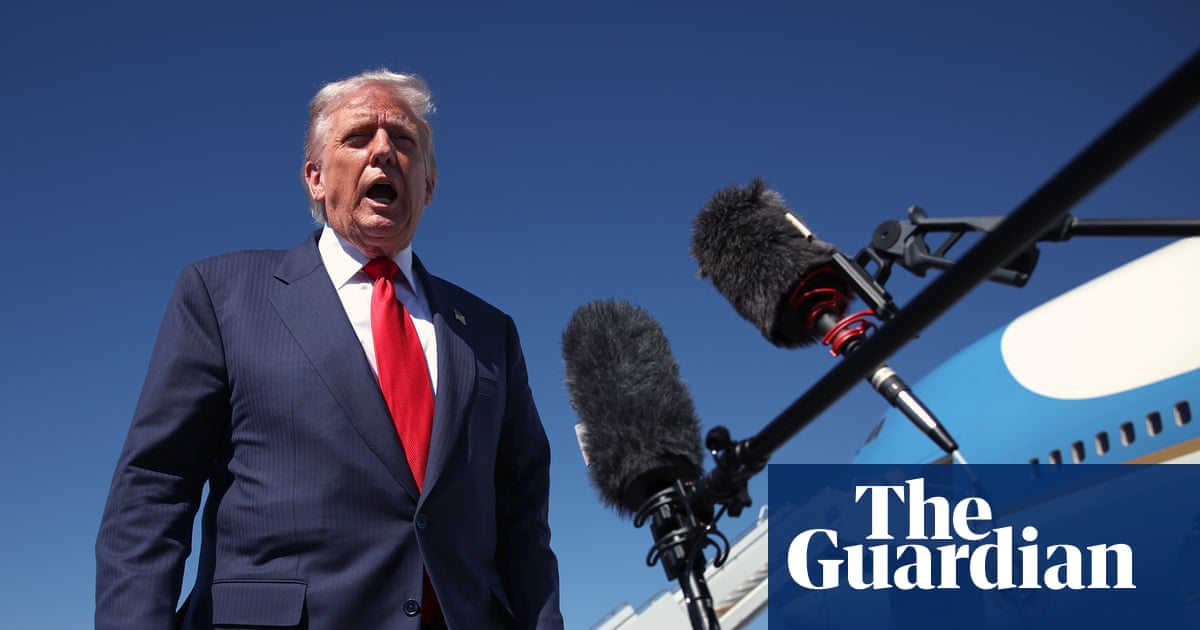Unpaid forced leave and mass firings are hardly the first things to spring to mind as hallmarks of a golden age of the American worker.
Yet these were the possibilities floated by Donald Trump this week as he addressed a government shutdown that began on 1 October and is showing no imminent sign of ending as Democrats and Republicans attempt to stare each other down in a dispute over funding priorities.
As reports emerged of a White House memorandum suggesting that furloughed federal workers might not receive back pay, Trump – who ostentatiously posed as the champion of American workers during last year’s presidential election campaign – was quick to twist the knife.
“I would say it depends on who we’re talking about,” he told reporters. “There are some people that really don’t deserve to be taken care of, and we’ll take care of them in a different way.”
On Friday, office of management and budget director Russell Vought – who infamously said he wanted to put federal workers “in trauma” – posted on X that “the RIFs [”reductions in force”, administration terminology for federal job cuts] have begun”, and within hours, agencies began confirming that notices had gone out.
That promises to heap more misery on a federal workforce already decimated and demoralized following job losses imposed by the unofficial “department of government efficiency”, also known as Doge, in the early months of Trump’s presidency.
Analysts say this tells the true story of the US worker’s plight under Trump 2.0.
While voicing the rhetoric of blue-collar solidarity in his election campaigns and public appearances, Trump has enacted policies that have worsened the economic realities of the working person in myriad ways, they argue.
The tax-and-spending provisions in Trump’s flagship “big beautiful bill” (passed by Congress in the summer), tariffs and the administration’s agenda of mass deportation of undocumented people are all taking a toll on workers’ living conditions, by raising costs and driving down wages.
“Trump is obsessed with a lot of the aesthetics of being pro-worker,” said Samantha Sanders, government affairs director at the Economic Policy Institute, a thinktank.
She cited an appearance at the White House in April in the company of coal miners and a giant banner of Trump’s face hung from the Department of Labor building in Washington DC.
“But when it comes down to actual actions, we know, from his personal life to his policy life, he just does not deliver on those things,” she said.
Trump’s protestations of being on the ordinary worker’s side conceal a multitude of policy sins that make their lives worse while acting as a friend and ally to the wealthy, the powerful and big business, say critics.
“He’s applied tariffs, in an un-nuanced way, and deported people that were supposedly taking American jobs and filling their schools,” said Sanders, who said Trump had been “honest and dishonest” about his intentions to a segment of voters who sought clear solutions to their economic problems and had, in many cases, become disaffected with the Democrats.
“But the other promises, like addressing the cost of living, bringing back jobs, saying ‘I’m going to increase wages’, etc, there’s clearly no strategy or policy plan to make any of that happen in a sustained way.”
A White House press release issued last month to mark Labor Day painted a rosy picture of “surging native-born employment and rising blue-collar wages … [and] innovative workforce initiatives like expanded apprenticeships and trade school funding”.
But Gbenga Ajilore, chief economist at the Center on Budget and Policy Priorities, said the administration’s assault on federal workers had knock-on effects.
“The federal workforce serves American workers, low- and moderate-income families,” he said. “You think about the Veterans Administration, Social Security Administration. I used to work for Department of Agriculture, and we had a missionary project focused on rural communities and rural development. That workforce is getting decimated, which is going to impact those things.”
Trump’s across-the-board tariffs – a trademark policy that he has hailed as a revenue-boosting device that could also revive long-lost US manufacturing – disproportionately affects workers while big corporations are afforded protections, according to Ajilore.
“Look at the range of tariffed goods: fertilizer, steel, aluminum, pharmaceuticals, heavy trucks, lumber, furniture,” he said. “It’s almost like, you name it, there’s a tariff on it. That raises cost for consumers. At the same time, tariffs on these goods are inputs towards businesses, which have to raise their costs.
“He’s talking about bringing back manufacturing, but tens of thousands of jobs have gone from manufacturing in the past couple of months and a lot of it is because of increased costs from tariffs. When businesses make adjustments to maintain their margin, labor is always the first to go.”
Yet while manufacturing workers took a hit, Apple – many of whose computer products are made in China and other Asian countries – was granted an exemption, Ajilore pointed out.
Deportations of undocumented people had created a rising climate of fear among many in the agricultural sector – which has traditionally attracted many immigrant workers – said Antonio De Loera, spokesperson for the United Farm Workers (UFW).
Compounding that effect, the Trump administration last week changed the rules governing wage levels for documented workers on temporary, non-immigrant H-2A visas, in effect allowing them to be paid less than laborers already living in the US.
The UFW estimates that the change will cost workers across the entire US farm sector $2.46bn in wages a year, as farmers react by hiring cheaper guest workers in place of higher-paid existing laborers, US citizens as well as undocumented workers.
De Loera, who warned that the impact would be to drive wages down across the sector, said farm workers were being made to pay the costs of a bailout the administration was preparing for farmers – who have complained about the impact of tariffs and a labor shortage caused by deportations.
“We know that there’s discussions of a big farm bailout coming, but in the meantime, this is one of the things that they’ve done to keep the farmers happy,” he said. “They’re taking more money out of the pockets of some of the hardest-working and poorest-paid workers in America to give it to wealthy landowners who are politically well-connected.”
Ajilore said others sectors were suffering from a wider economic problem caused by the administration’s policies, adding up to a grim outlook for workers generally.
“The American worker is struggling,” he said. “The labor market is frozen. There hasn’t been a lot of layoffs, but there’s very little hiring and so there’s very little churn, which is one reason why the US labor market is normally so robust – people lose a job but are able to get new jobs.
“The long-term unemployment, people who have been out of work for more than 27 weeks, has gone up from 20% to 25% of the jobless. And a larger share of them are college graduates, who would normally be able to get jobs. So workers aren’t able to experience mobility or progress – and at the same time, costs are going up.”

 German (DE)
German (DE)  English (US)
English (US)  Spanish (ES)
Spanish (ES)  French (FR)
French (FR)  Hindi (IN)
Hindi (IN)  Italian (IT)
Italian (IT)  Russian (RU)
Russian (RU)  3 weeks ago
3 weeks ago
























Comments